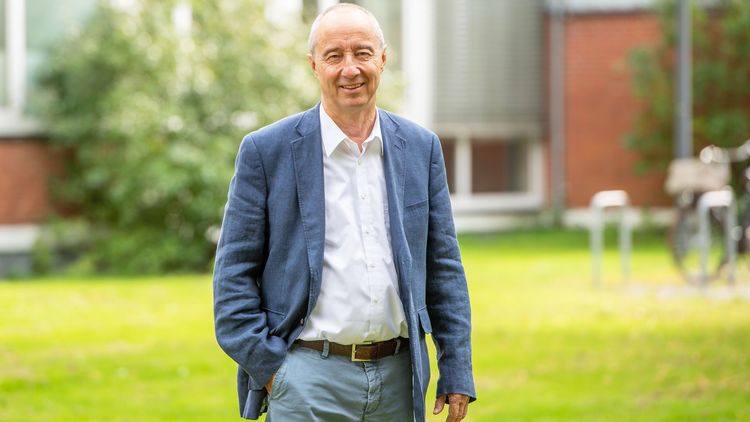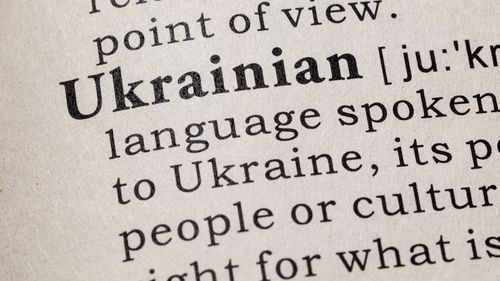Languages are often more variable than we imagine. In this interview, Slavic scholar Gerd Hentschel talks about German loan words in Upper Silesian, languages as identity and the aspirations of Upper Silesians to gain appreciation for their idiom.
Professor Hentschel, you research linguistic variations and linguistic contact – in other words what happens when two or more languages meet. What is it about this that fascinates you?
People basically think of languages as closed systems with set rules. But as they are being spoken all the time, they are in constant flux. Even in our Standard German there is much more variation than we imagine. Moreover, a language is situated within social and political contexts and also stands in relation to other languages. The German language has taken over many Anglicisms since the war. This reflects reality. I am less interested in the supposedly strict rules than in the question of how languages develop as a self-regulating system.
One of your areas of research is German loanwords – terms whose expression and meaning can be traced back to the German language. In one project you focused specifically on these Germanisms in Silesian. How did you get interested in this topic?
Loanwords reflect contact between languages. In my very first academic position I researched German loanwords in Polish. The findings from the many years of research I have done in this field have been collated from various projects and integrated into the German loanword portal (Lehnwort-Portal Deutsch) at the Leibniz Institute for the German Language in Mannheim. Some time ago I was contacted by Jolanta Tambor from the University of Silesia in Katowice. She posited that all Germanisms had disappeared from Silesian since 1945. I was not convinced that this was altogether true and suggested that we investigate the matter.
The monograph that you wrote with Jolanta Tambor and your colleague István Fekete was also inspired by the desire to have Silesian recognized as a regional language in line with the European Charter for Regional or Minority Languages. What is special about this language?
We are specifically interested in the idiom spoken by the people of Upper Silesia, in other words the south-eastern part of the historical region of Silesia. We gathered data in the industrial region stretching between Gliwice and Katowice and down to the Czech border in the south, and in the Opole region further to the west. Silesian is a sort of mixed language that combines words as well as, though less frequently, grammatical elements from two languages, German and Polish in the broader sense. Similar hybrid varieties are also found in Belarus and Ukraine, but with strong Russian influences. As far back as the end of the eighteenth century, the German philologist Johann Christoph Adelung held that people speaking Silesian took German words and combined them with Polish endings. There is some truth to this. The historical basis for this argument was a Polish dialect spoken by raftsmen on the Oder River, which is why it is known as “Water Polish”. These people had a lot of contact with Germans and as a result Silesian took over lots of German words. “Water Polish” was later re-interpreted to mean “Polish watered down by German”.
So for a long time Upper Silesians spoke two or even three languages?
Given that Silesia was under German rule for several centuries, it was a social necessity for people to speak at least some German. The Catholic Church ensured that Standard Polish also had its place. But at home and among “their own kind”, people spoke Silesian. Upper Silesia was divided in the aftermath of the First World War, and the eastern part including Katowice went to Poland, which had just regained independence. The west, and cities such as Bytom, which is 15 kilometres away, stayed with the German Reich. The conflict between pro-German and pro-Polish Upper Silesians was bloody, and in some cases fought out among family members and neighbours. In the east, German lost much of its relevance and was re-placed by Polish. In the west, the old constellation persisted.
After 1945 the situation changed completely ...
Approximately two-thirds of the current population of Upper Silesia had roots in other parts of Po-land prior to 1945. Polish now became the so-called umbrella language, the language used by the authorities and above all the educational institutions. In the early years cultural and educational policies were vehemently anti-German and the German language was prohibited. Today it is only marginally present. Silesian, which was heavily influenced by German, was also frowned upon. Today the situation is a lot more relaxed, although tensions still persist.
How did you go about your study?
We questioned 2,000 people in small groups. The first questions were about identity, about people’s socio-biographical background and what they wanted for the Silesian language. We wanted to know what factors encouraged or discouraged their usage of Silesian and Germanisms. And above all, we wanted to find out which Germanisms are still alive and well 70 years after the war. Because today, old-stock Silesians and their descendants subtly incline their linguistic behaviour and choice of expressions towards Silesian or Polish – depending on the communication situation. In contemporary sociolinguistics this is known as style-shifting. Then we selected 700 Silesian words of German origin. We asked how often people used the Silesian word and how often they use its equivalent in Standard Polish instead – even when speaking Silesian. The participants listed their preferences on a scale from one (Silesian only) to seven (Polish only). In linguistics this is known as “subjective frequency” or “frequency estimation”.
What did you discover?
First, as regards identity, our study suggests that most respondents identify as both Silesian and Polish. Thus they see their ethno-cultural Otherness as part of the broader spectrum of Polish identity. Only very few of them still don’t see themselves as Polish today. So, the Polish nationalist politicians' distrust of old-stock Silesians is unfounded. As regards the words of German origin: almost half of the 700 words we asked about have disappeared or are used only sporadically. Around ten percent are in regular use by all respondents. A good third of them are commonly used but not uncontested. We found no major regional differences – which testifies to a relatively coherent communication space. Only a few Germanisms are particular to certain sub-regions. The Upper Silesian region is in fact in large parts a conglomerate of towns and cities, similar to the Ruhr. If you don’t pay attention to the place names on signs, you won’t notice that you are actually passing from one city to the next. Certain Germanisms are only used regularly by the older genera-tion, with younger people often never having heard of them. We also asked to what extent the respondents still used German. Although a third of them said they spoke some German, only a small percentage of them spoke it well. Very few people said that they use German on a regular basis. This means that to-day direct, intensive contact between Silesian and German is a marginal phenomenon.
Was there anything that particularly surprised you?
We found a very clear bimodal distribution. This means that if individuals still know a Germanism, they generally use it very frequently in Silesian. There were few nuances. We hadn't expected such an unambiguous result because almost all the respondents also speak Polish on a daily basis to a greater or lesser extent. A large percentage of respondents speak Silesian almost as often as they do Polish.
Which Germanisms are used most frequently?
The most commonly used word has just two letters: ja (English: yes), which is tak in Polish. The word with the meaning "yes" is readily borrowed between languages: even the variant of Belarusian, which is strongly influenced by Russian, uses the Russian word for "yes" but the Belarusian word for "no". Since Upper Silesia is a mining region, mining words are common, quite apart from purely technical terminology. Gruba, similar to the German word Grube, is used for “pit” or “shaft”, whereas the Polish word is kopalnia. For “spectacles”, the Silesian is brele or bryle, which is close to the German Brille, whereas the Polish is okulary. For “air” they use luft, which is the German word, whereas in Polish it’s powietrze – just to give a few examples of everyday words.
What factors determine whether a Germanism is still in use?
The key criterion is that if people speak Silesian regularly, then they use more German loanwords. People with a higher education do so to a lesser extent – not for ideological reasons but due to social circumstances. A Germanism will also remain in use longer if it is used in other regional varieties of Polish, although not in the standard language. This is linked to the large number of Poles who have moved to the region. A third important factor is the pronounced Silesian identity. Languages are not just a means of communication, they are also about identity – they provide a piece of home, a sense of belonging. The loss of linguistic diversity in Europe is not just a result of globalization but actually began much earlier with nationalization. Through globalization, in other words the internationalization of political, economic and educational institutions, so-called national languages partially cede areas of functionality to internationally used lingua francas. Democratization and liberalization, by contrast, work in favour of smaller languages.
What do Silesians want?
Basically, just the emancipation of their variety of speech. Almost half of them would like to see Silesian as the second official language. And old-stock Silesians in particular want recognition for its regionality, in all its historical and cultural specificity. And they want more Silesian presence on the radio and television in particular.
What are the conclusions of your research – for example as regards the idea that Silesian should be re- cognized as a regional language?
If you want to standardize Silesian for this purpose, so it can be used in teaching, reading and dictionaries in school, for example, you could primarily adopt what everyone speaks – words like ja, gruba, luft. That would provide a solid foundation. If you don’t do this you run the risk that people won’t accept the standardized or codified Silesian: a majority is in favour of retaining Germanisms. The Germanisms that have fallen out of use could be left out. But that is ultimately a political question.
What do you hope for?
I have a predilection for little pieces of home. It was my Polish PhD supervisor in Göttingen, Professor Andrzej de Vincenz, who sparked my interest in them. When a sizeable group emerges from an evolved sense of belonging and wants recognition and political support for its idiom, its language, then in a democratic and liberal Europe this should be granted.
Interview: Constanze Böttcher


